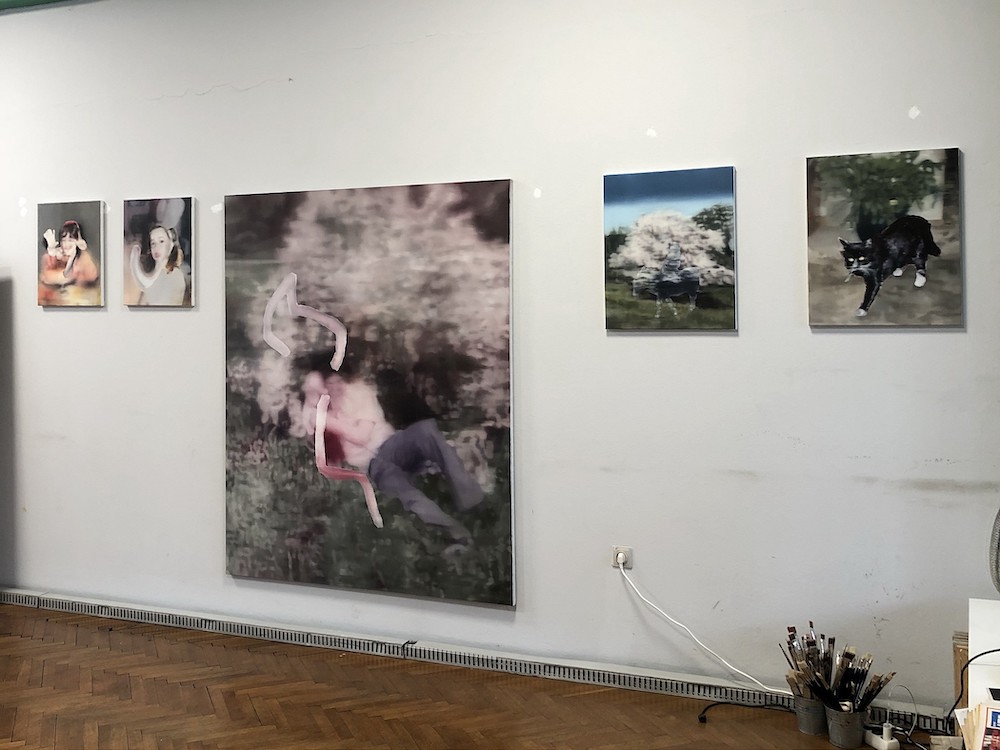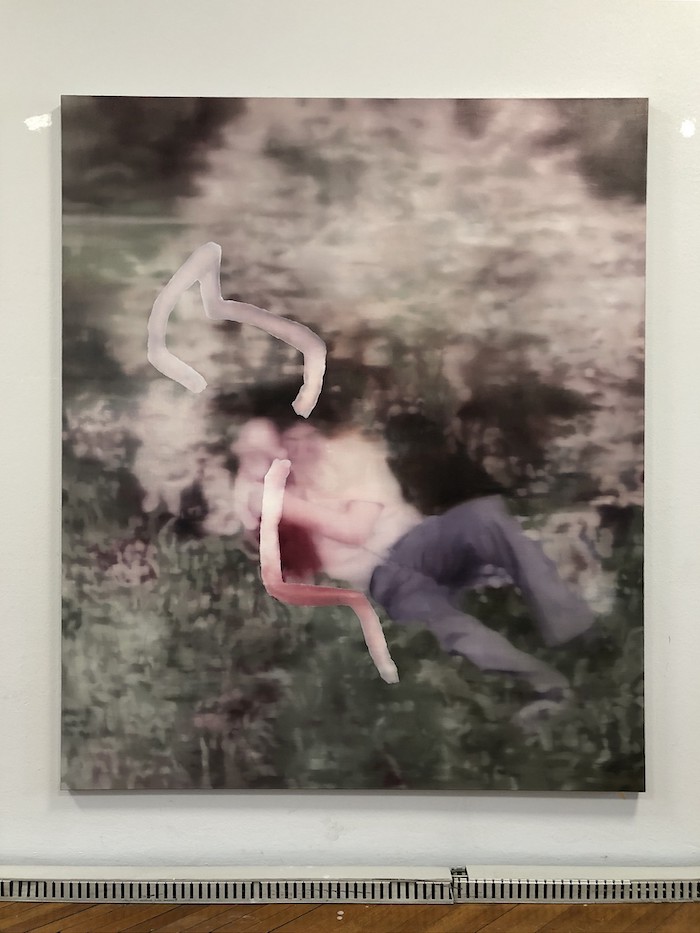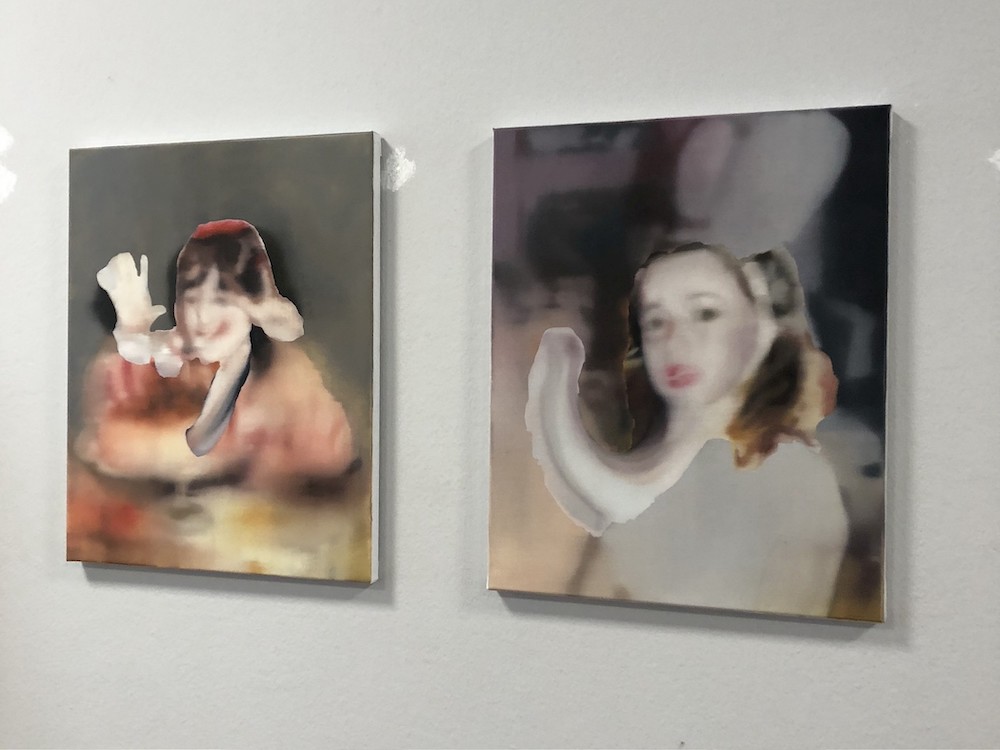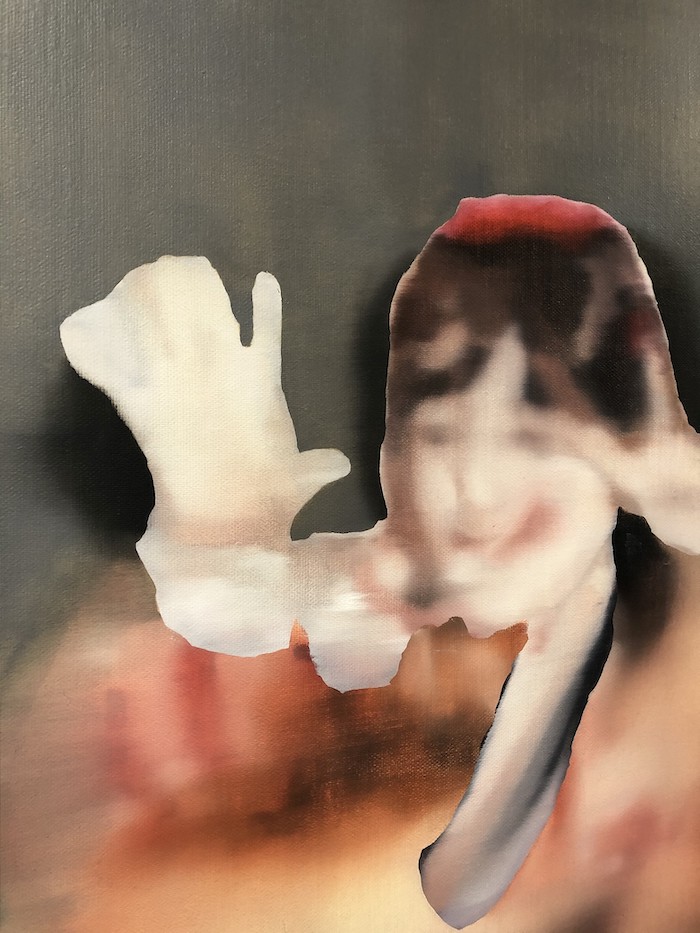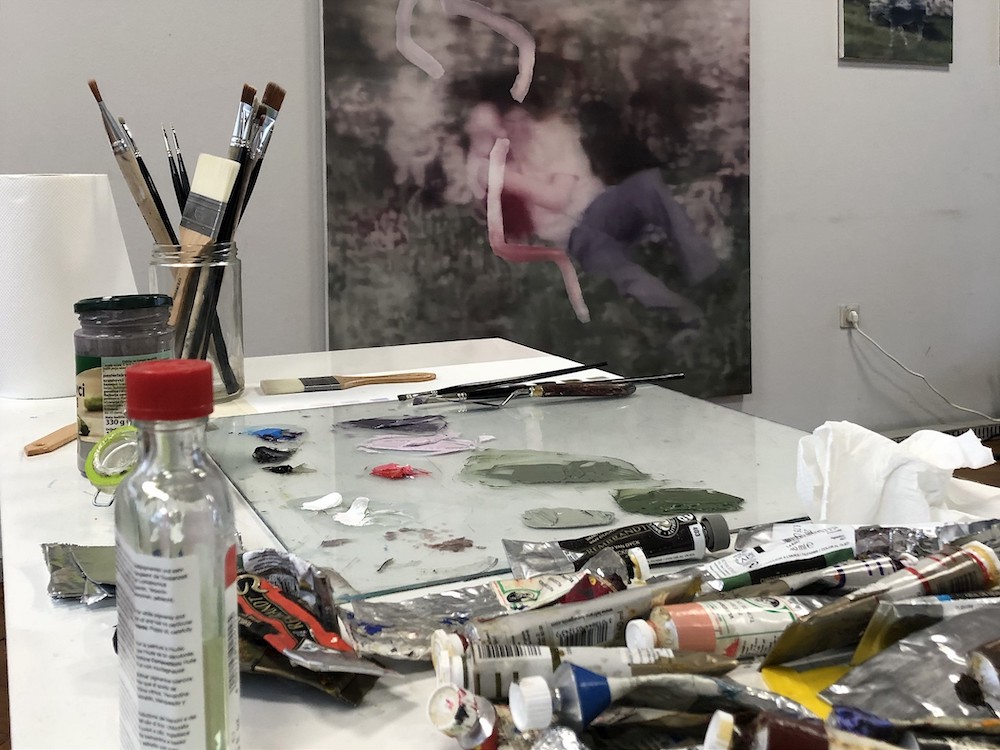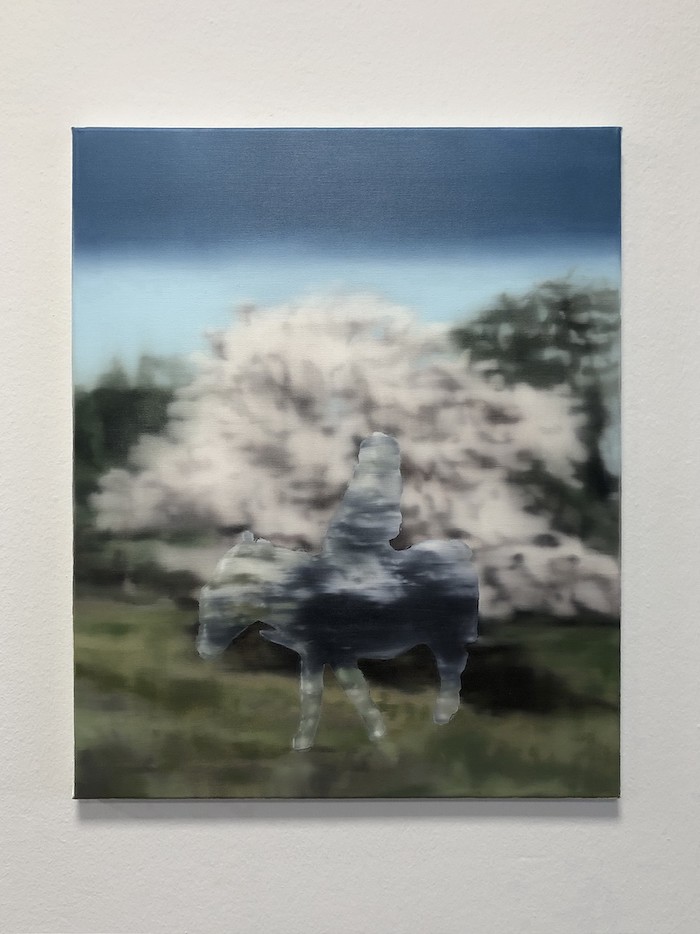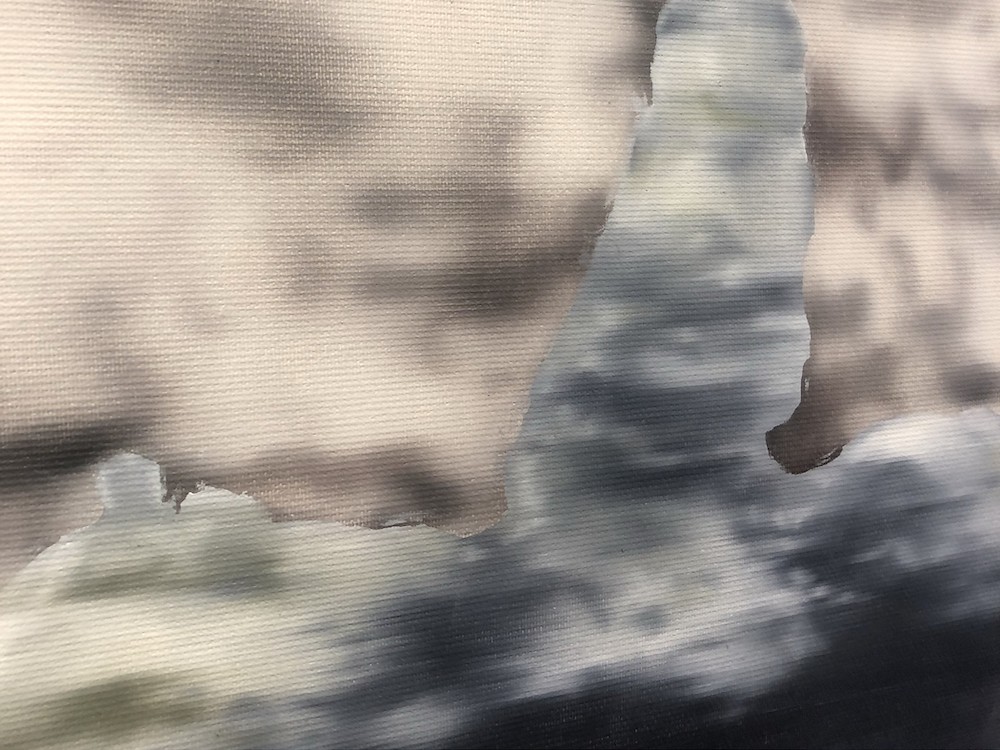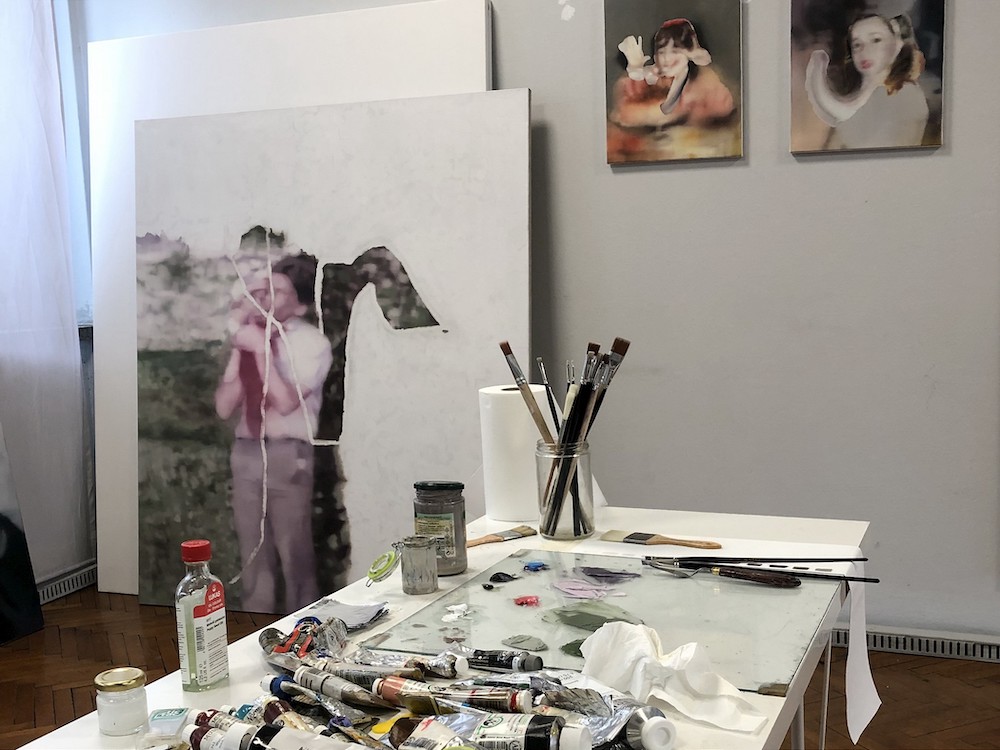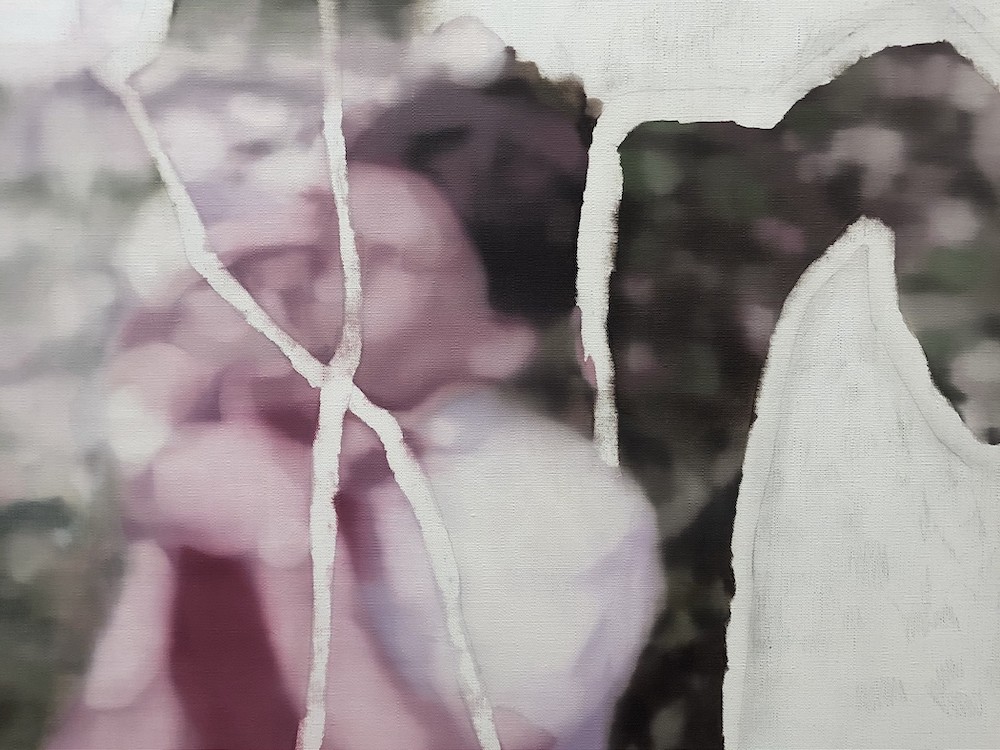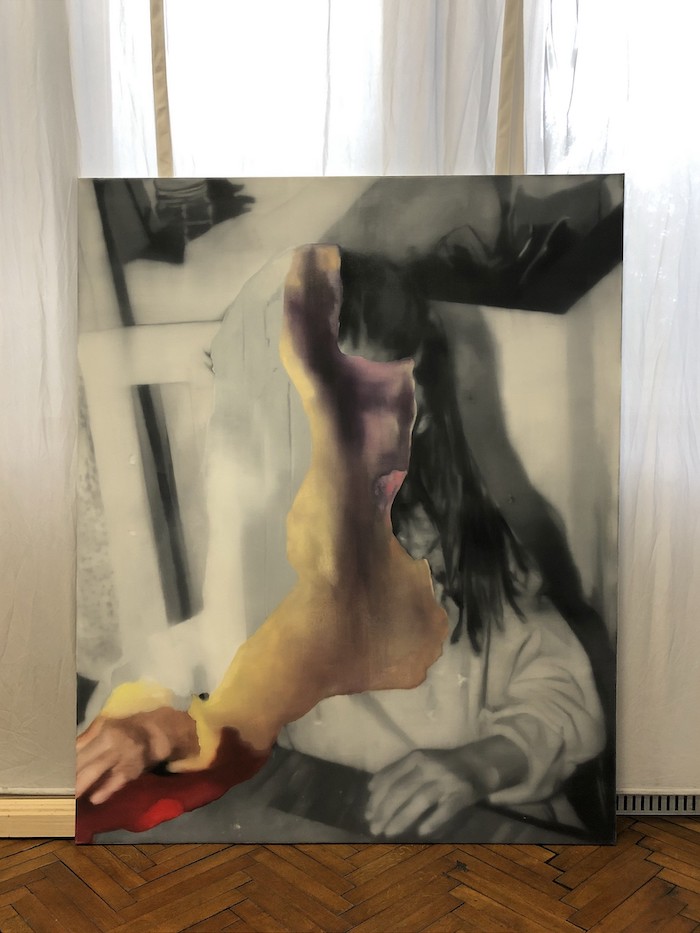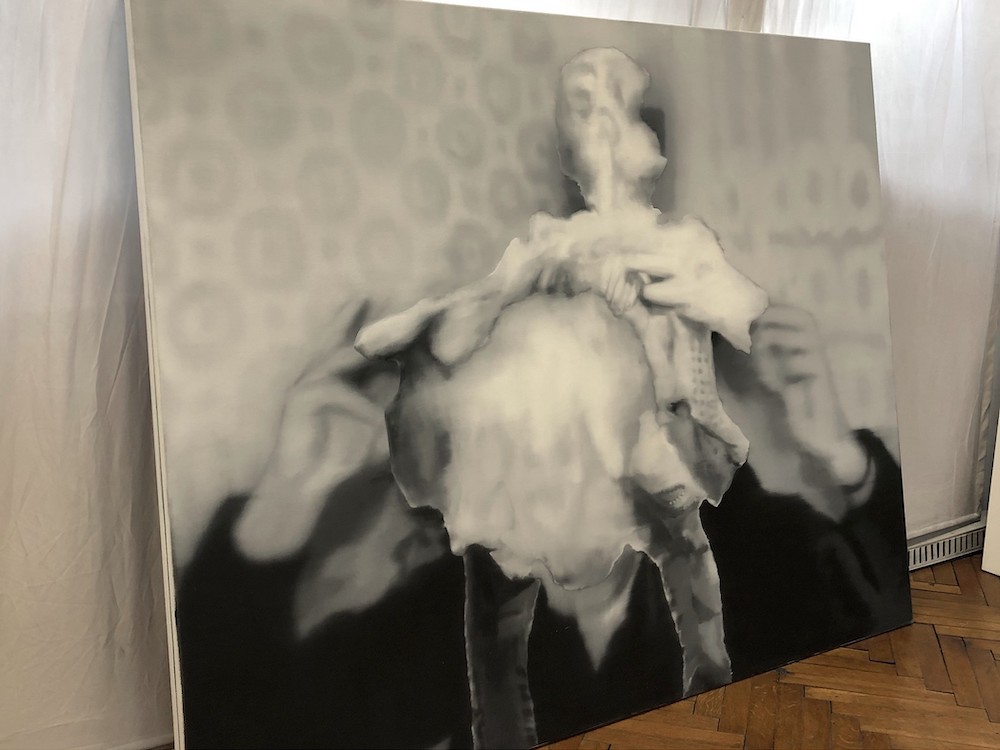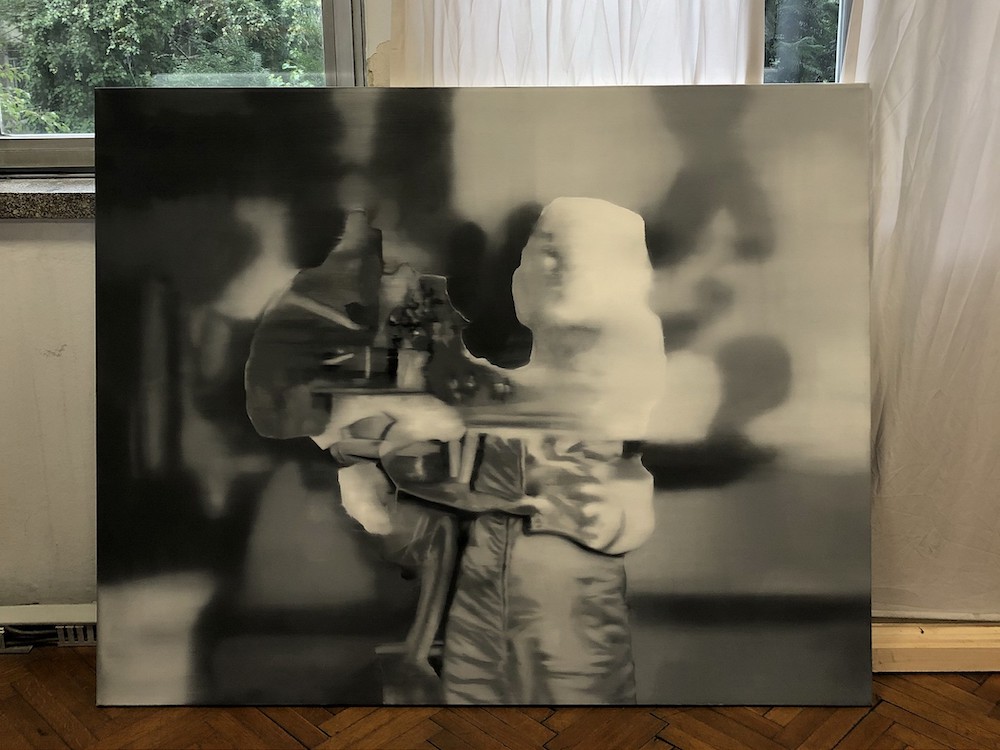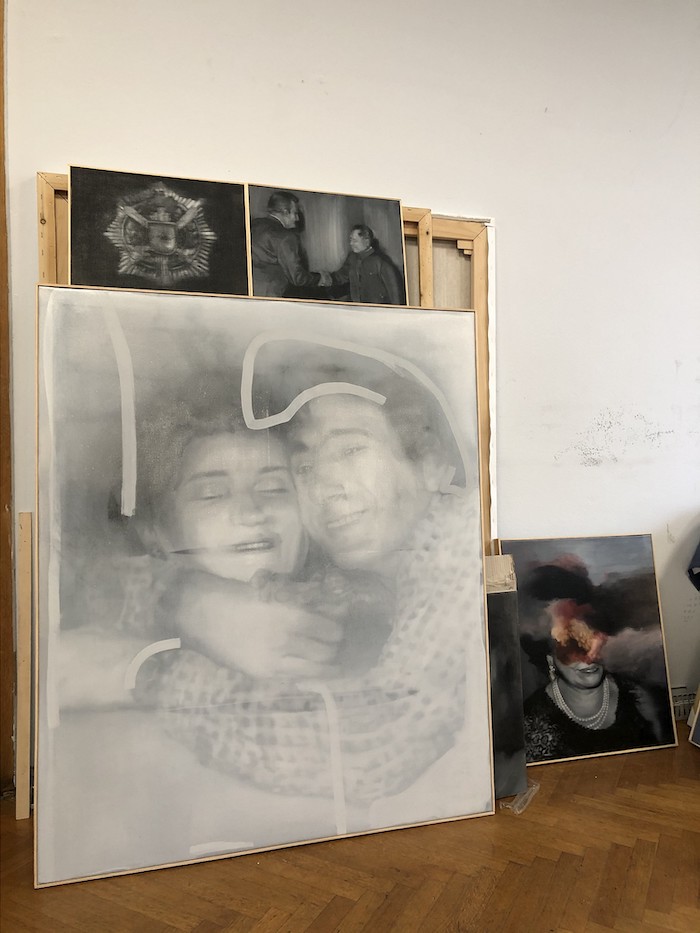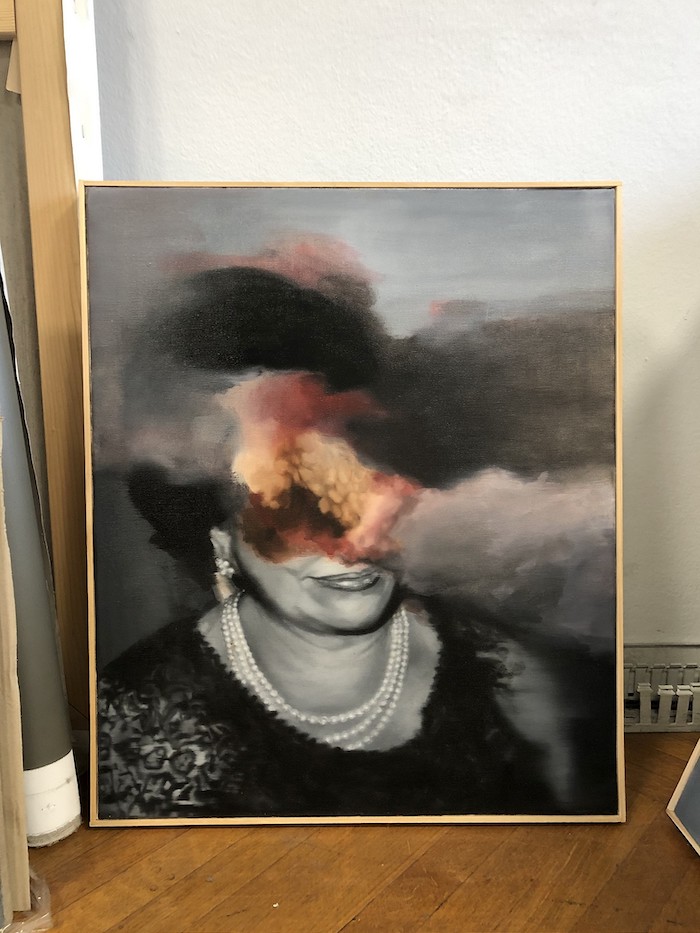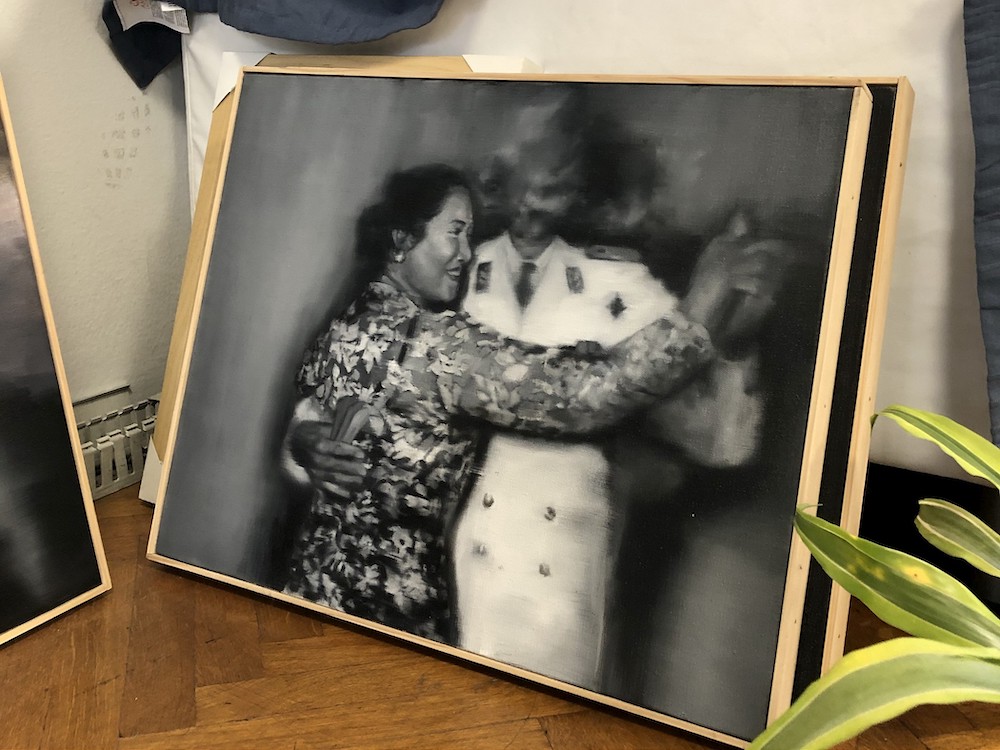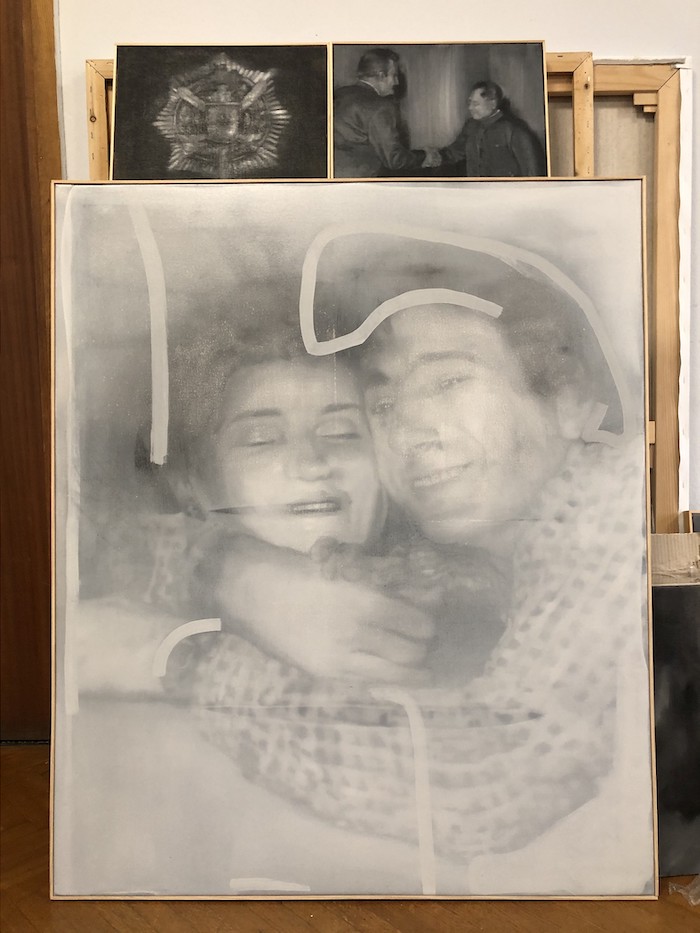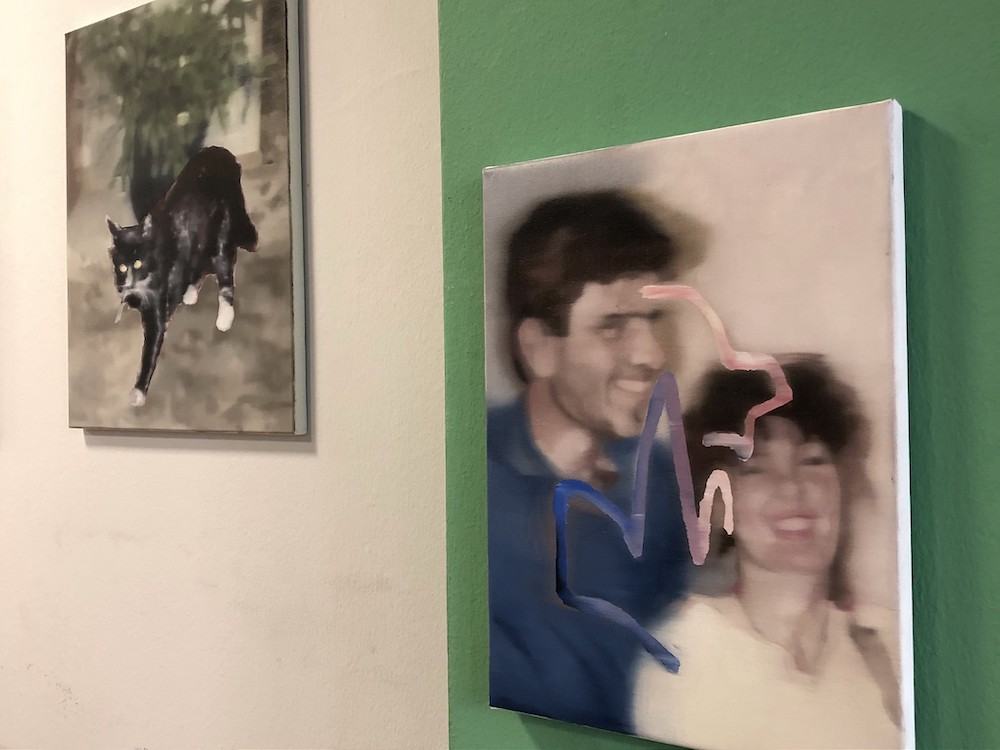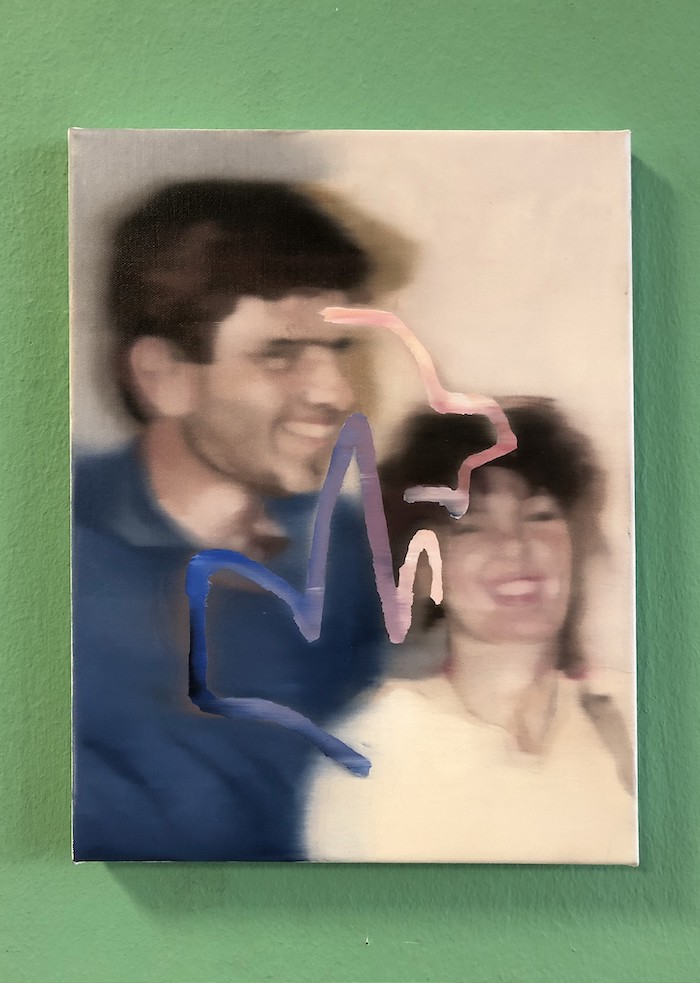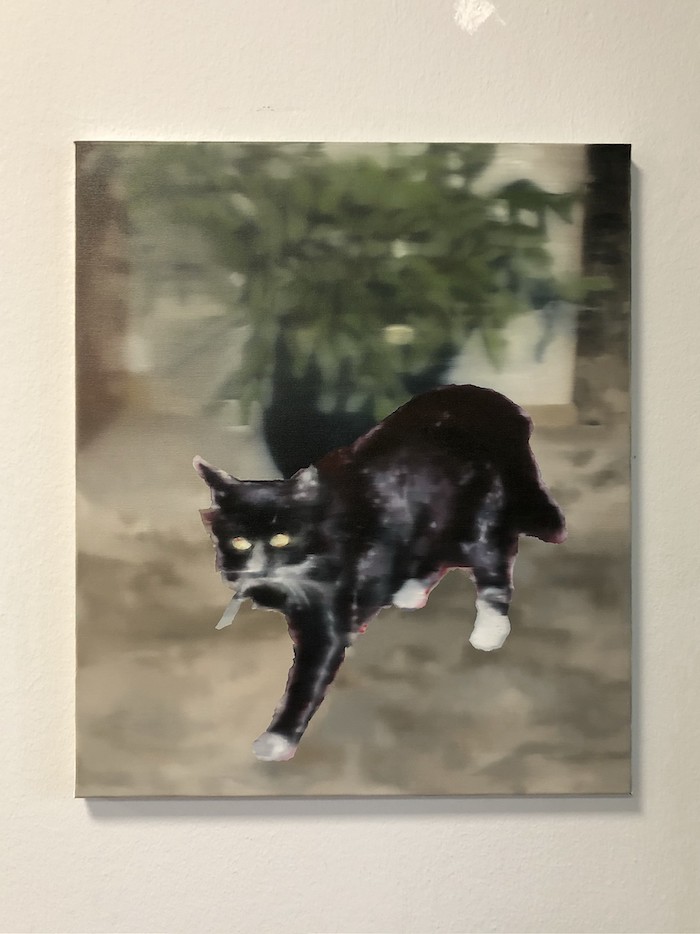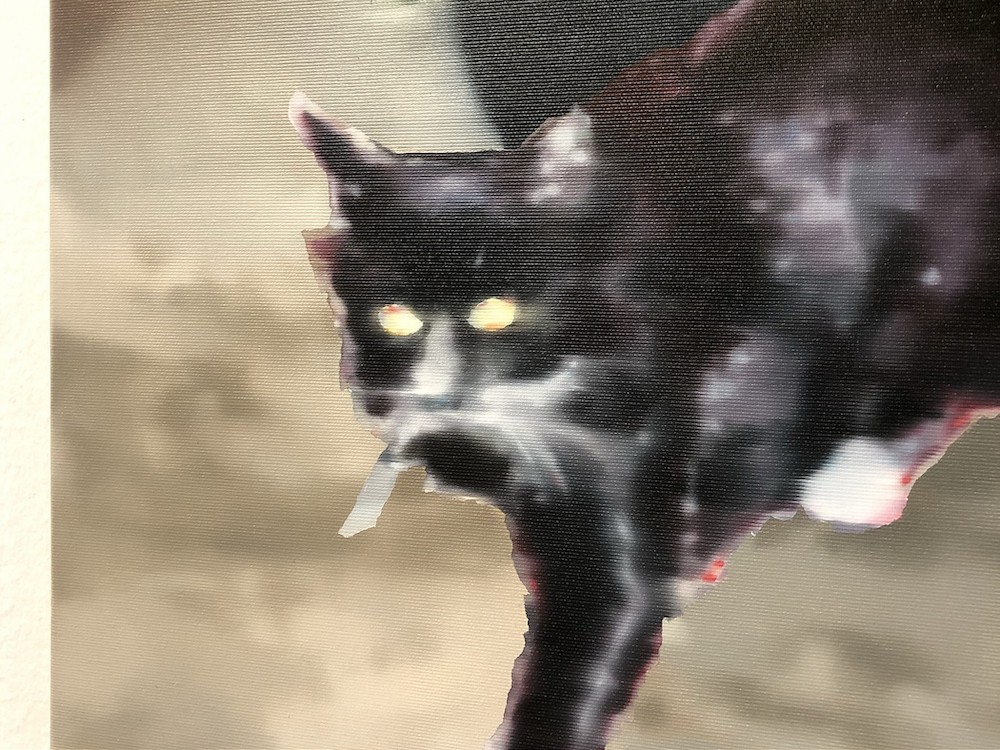Leonardo da Vinci’s used camera obscura as an aid in drawing perfect perspective, Vermeer found it assisted the mechanics of optics and Gerard Richter painted from black and white photographs. Once considered an unholy alliance of photography and painting, contemporary artists easily cross over to create a variety of visuals from a phone screen. . And one artist whose practice is working in such a manner is the Croatian painter Martina Grlić, whose studio in Zagreb we've visited a few months back.
Grlić translates the photographic documents of former Yugoslavia's transitional period into her painting. Growing up in a time when everyday life was a veritable shapeshifter, she started looking at photos as reminders of days not long ago, became determined to recreate those moments into a new context. She finally began to alternate those snapshots of reality, transforming them into more introspective images and focused on her own experiences and emotions. Based on a figurative structure, the works started becoming contextual, so she proceeded to explore the possibilities of paint in creating impossible effects. Deconstructing and blending existing imagery, mixing color with black and white imagery, she often pushed them to the very edge of abstraction.
Commonplace images of familiar moments like childhood birthday celebrations, a day out in nature, or a picture of a pet, become moody, emotion-filled scenes, hinting at the uncertainty of memory. Layering color and black and white imagery on top of each other and regularly distorting her subjects, she conveys the personal into the universal, uniting the use of photography as document with painterly technique. Intrigued by such uncanny imagery, we talked with the Croation artist about her thought process.
Saša Bogojev: What draws you towards painting from photographs?
Martina Grlić: Probably a fact that it is a reference from real life. A photograph or video is a document of the time in the sense that it contains something once considered reality and that is very exciting. I like to refer to that in my work and use it in any way I can.
How did the current body of colored, slightly distorted images evolve?
I always had this notion of colliding two elements in the painting, illegible and intelligible reality, and somehow I am still exploring that. Painting is a slow media, it takes time, and often through that process new ideas emerge. I was doing a lot of monochrome photorealistic blurred images, and the idea of it expands only to a certain degree, and after that you need to move on. I like to change and experiment with my work.
Can you elaborate on your statement about works evolving conceptually.
I worked on a few series that were thematically involved with the changes that took place during the transition period after the fall of Yugoslavia. I used a lot of documentary references, for instance archival footage or photographs from a specific event, photographs from old factories or clips from news reports, and old journals. I wanted to capture the ideology which was lost and represent those pictures once again in a new context. Interestingly, the work, which had this seemingly naive or ingenious narrative became a reflection of public social stance. So it was a sort of exploration with a very constructive approach. In that sense, I feel closer to the post-modern way of thinking rather than the idea of pure painting. My latest works are more pictorial so the imaginative and fictional occurs during the painting process.
Did you ever feel restrained by the provinciality of your themes and motifs?
Partially, yes, in the sense that after a certain amount of time of being recognized, the public creates an image of an artist. Also, some of my works are very time-place determined which makes it hard to reach an outside audience.I try not to get caught in the spiderweb of expectations and just work in the direction I feel like.
What atmosphere are you trying to convey with the images that capture experiences from your youth?
As an introspective series, these paintings are representations of remembering; however, they go beyond any straightforward autobiography. I think of them as a neverending assemblage of memories, fantasies, ridiculous superstitions, or just anything beautiful, tragic, or grotesque where everything is paramount. Kind of like in forensic approach. I try to impersonate this nostalgic feeling by referring to a world that doesn't exist anymore.
Do you think it’s an artist’s imperative to interpret the big changes that happen in the world around them?
Well, it is rather interesting how the concepts of the human mind or behavior cannot be explained by simple means or rational logic. That is very close to art. For me, it is just an instinct to try to clarify phenomena that occur in society. I don't think one can be completely detached from that.
What is the purpose of the distortion of the new work and where or how do you source photo references you're using?
I wanted to incorporate missing pieces or distortions which act like a puzzle, or a path for the viewer to create another meaning rather than just the obvious. It is also a way of mimicking the impossibility of memory, like with amnesia. Mostly I use my photographs but also search online or via flea-markets.
Is there a certain narrative or chronology you try to follow or do you just work intuitively?
There is the main thought or a fixed idea I follow but this is an open-ended body of work, at least for now. I am currently preparing a presentation at Lauba in Zagreb next year, a solo show in 2022 at Mestrovic Pavillon also in Zagreb, and I'm participating in a group show with Marian Cramer Projects in Amsterdam in November together with Bijijoo, Jack Shure, and Nicolás Romero Escalada.
@martina_grlic

